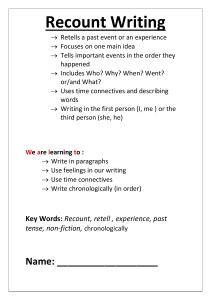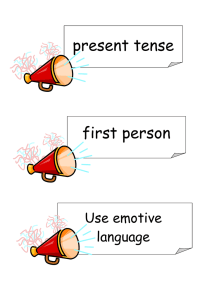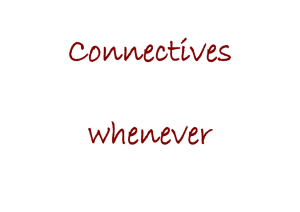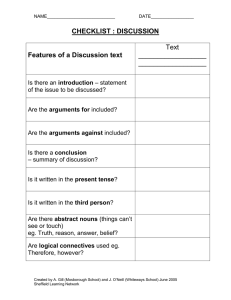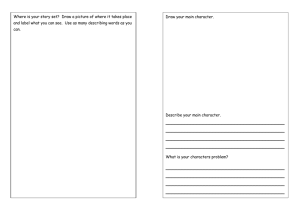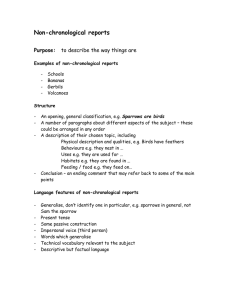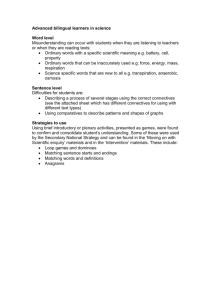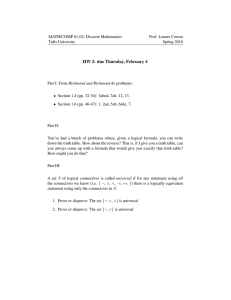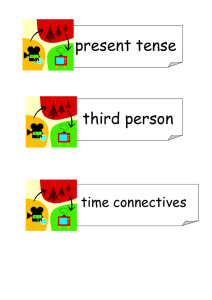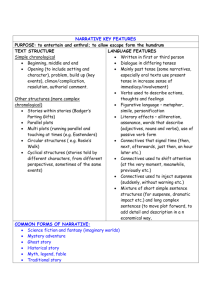Writing Types: Explanation, Report, Instructions, Persuasion
advertisement
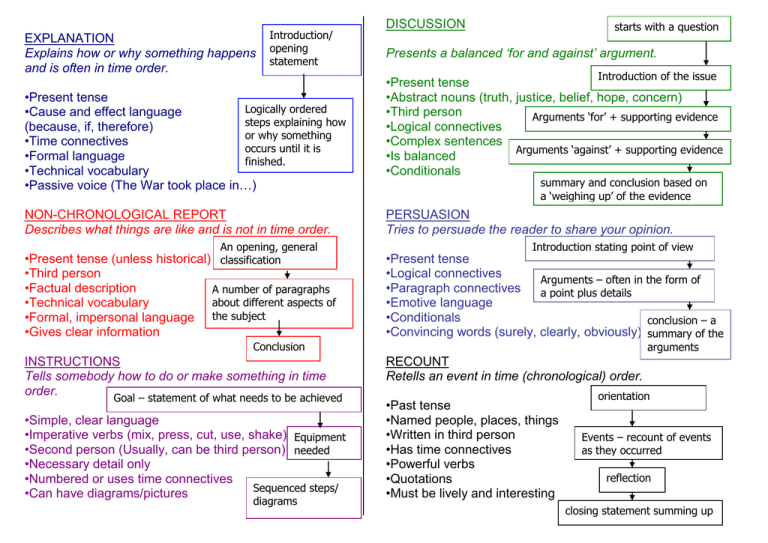
EXPLANATION Explains how or why something happens and is often in time order. Introduction/ opening statement •Present tense Logically ordered •Cause and effect language steps explaining how (because, if, therefore) or why something •Time connectives occurs until it is •Formal language finished. •Technical vocabulary •Passive voice (The War took place in…) NON-CHRONOLOGICAL REPORT Describes what things are like and is not in time order. An opening, general •Present tense (unless historical) classification •Third person •Factual description •Technical vocabulary •Formal, impersonal language •Gives clear information A number of paragraphs about different aspects of the subject Conclusion INSTRUCTIONS Tells somebody how to do or make something in time order. Goal – statement of what needs to be achieved •Simple, clear language •Imperative verbs (mix, press, cut, use, shake) Equipment •Second person (Usually, can be third person) needed •Necessary detail only •Numbered or uses time connectives Sequenced steps/ •Can have diagrams/pictures diagrams DISCUSSION starts with a question Presents a balanced ‘for and against’ argument. Introduction of the issue •Present tense •Abstract nouns (truth, justice, belief, hope, concern) •Third person Arguments ‘for’ + supporting evidence •Logical connectives •Complex sentences Arguments ‘against’ + supporting evidence •Is balanced •Conditionals summary and conclusion based on a ‘weighing up’ of the evidence PERSUASION Tries to persuade the reader to share your opinion. Introduction stating point of view •Present tense •Logical connectives Arguments – often in the form of •Paragraph connectives a point plus details •Emotive language •Conditionals conclusion – a •Convincing words (surely, clearly, obviously) summary of the arguments RECOUNT Retells an event in time (chronological) order. •Past tense •Named people, places, things •Written in third person •Has time connectives •Powerful verbs •Quotations •Must be lively and interesting orientation Events – recount of events as they occurred reflection closing statement summing up
